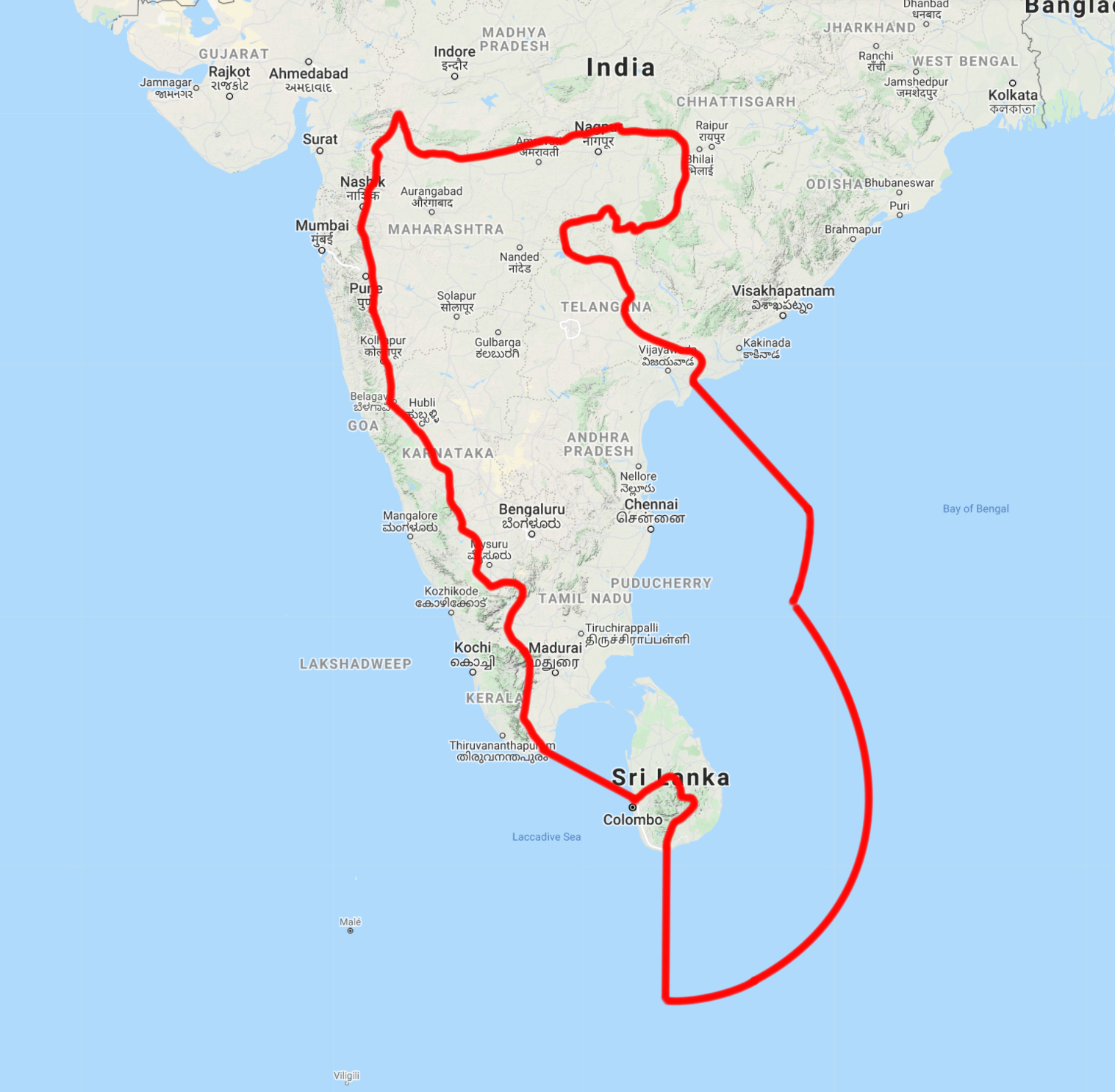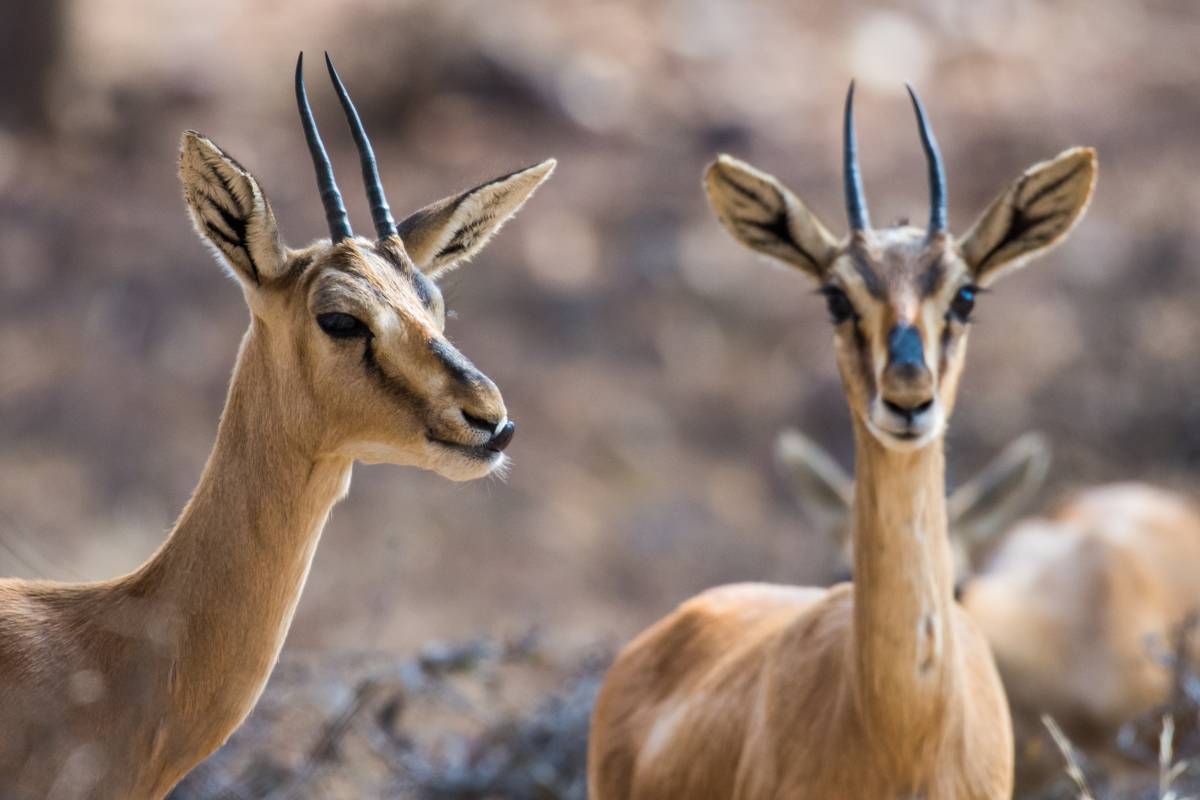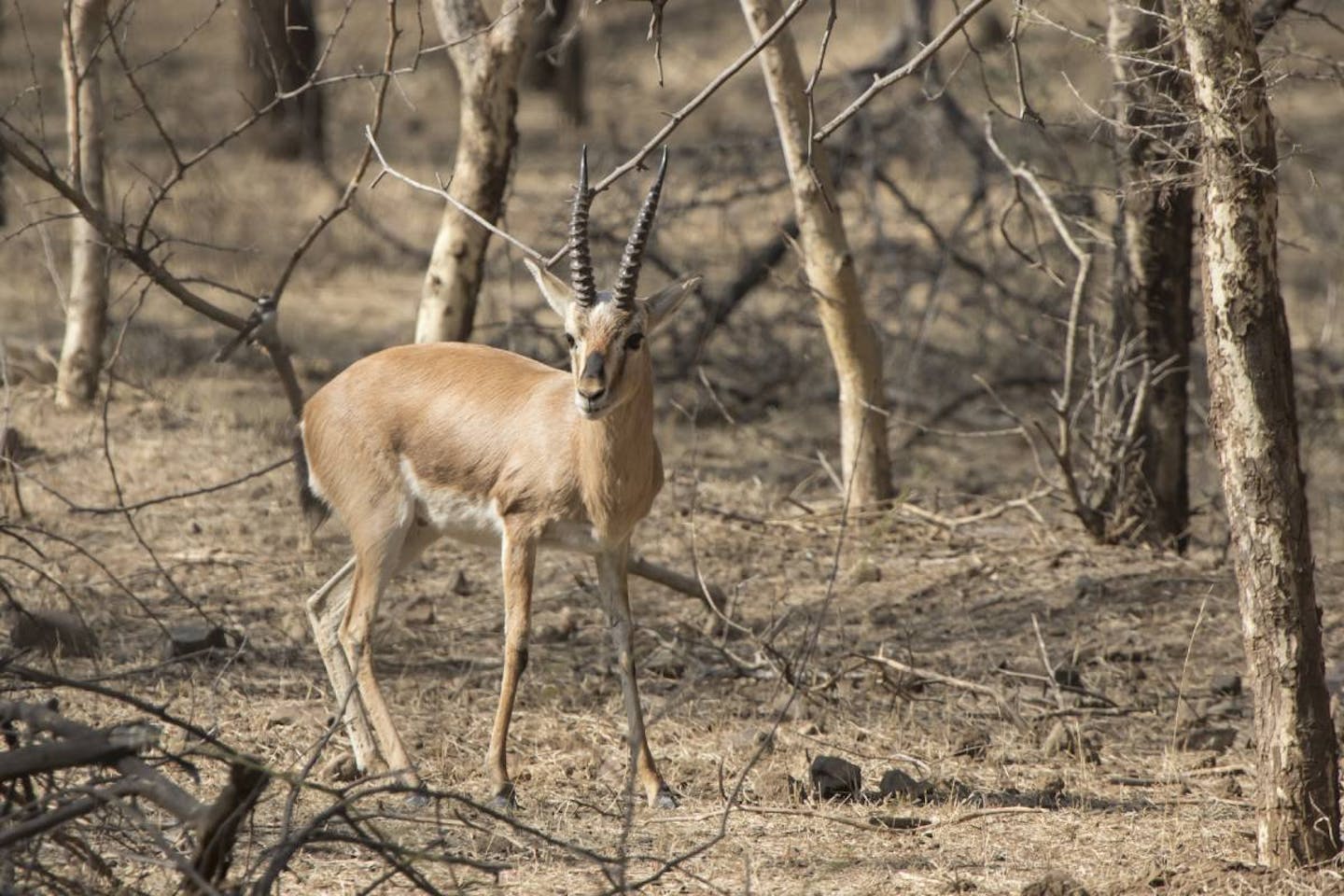Indian gazelle: a charming species native to the Iranian desert
One Earth's “Species of the Week” series highlights the flagship species of each of the 844 unique ecoregions contained within Earth’s bioregions.
Perfectly spiraled black horns pop up out of the tall, golden grass. White-tipped ears twitch and expressive round eyes stare out behind long eyelashes. A cross between an African gazelle in the Serengeti and a white-tailed deer in Appalachia, the Indian gazelle, or chinkara, is a charming gazelle species native to the deserts and shrublands of Iran, Afghanistan, Pakistan, and India. Weighing about 23 kg (51 lb), they stand 65 cm (26 in) tall with horns measuring over 39 cm (15 in).
Even with their tawny coat blending into much of their dry habitat, Indian gazelles are a vital food source within their ecosystem for predators and also help disperse seeds.

The Indian gazelle is the flagship species of the East Deccan Dry-Evergreen Forests ecoregion, located in the Greater Deccan-Sri Lankan Forests & Drylands bioregion (IM8).
Indian gazelles are mostly solitary but have been spotted in groups of four to ten individuals. Males are extremely defensive, protecting their territory, resources, and fighting for a mate with their horns. Females primarily give birth in April, and offspring stay with their mothers until 12 months of age. A highly adaptive species, Indian gazelles can be found in deciduous forests, open woodlands, and extremely arid drylands.
They can go without drinking for long periods of time as they have evolved physiologically to conserve metabolic water.
Surprisingly, dew droplets that get deposited overnight are often the primary source of hydration for Indian gazelles. They also are more adapted to browsing than grazing, consuming grasses, various leaves, crops, and fruits such as pumpkins and melons. It is with this diet that researchers believe Indian gazelles may play an imperative role in their ecosystem as seed dispersers. Swift and agile runners, they roam long distances within their habitat.
Many renowned species also rely on these gazelles as a food source like Bengal tigers, leopards, and the critically endangered Asiatic cheetah.

Generally frightened by humans, Indian gazelles stamp their forefoot on the ground and emit a sneeze-like hiss through their nose when alarmed. This is where the local name, chinkara, the sneezer, originates. Despite being a regional icon, habitat loss and overhunting threatened the species in the 1950s. Currently, the Indian gazelle is a species of least concern by the IUCN as protected areas and conservation efforts have helped recover a healthy population. A prime example of how nature can heal when given time and space to roam freely.
Interested in learning more about the bioregions of Indomayala? Use One Earth's interactive Navigator to explore bioregions around the world.
Launch Bioregion Navigator


